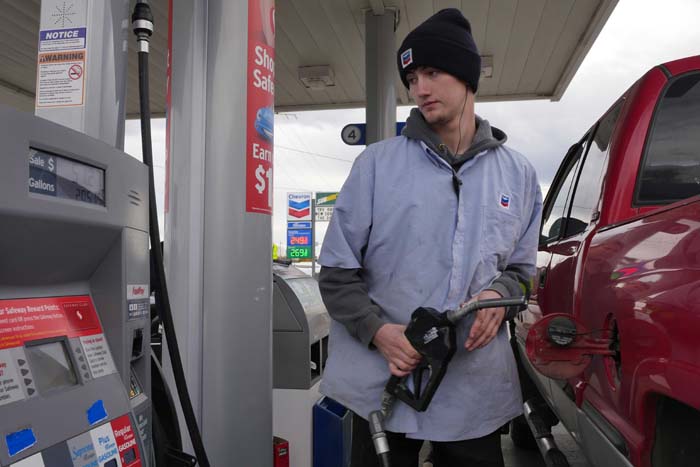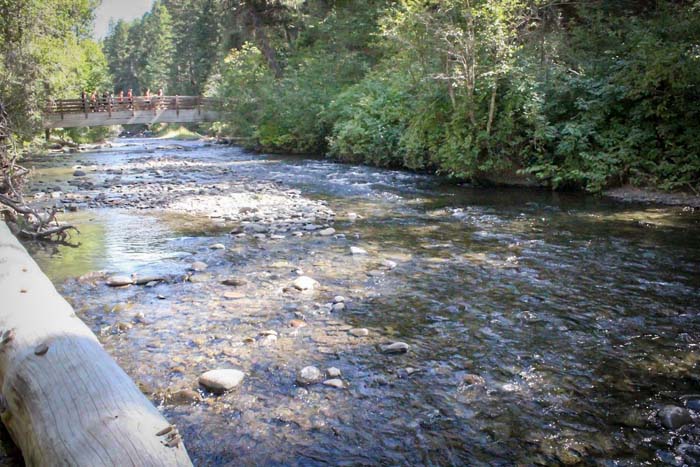La Grande voters face decision on gas tax
Published 7:30 am Tuesday, October 25, 2016

- Taylor Neustrel pumps gasoline outside the C&M Country Store on North McAlister Road in Island City Friday afternoon. The La Grande City Council voted unanimously in July to put a gas tax on the Nov. 8 ballot. If approved, the measure would implement a 3-cent per gallon tax on gasoline sales in the city limits of La Grande.(Tim Mustoe/The Observer)
A proposed local gas tax, years in the making, will be on the Nov. 8 ballot for La Grande voters to decide.
Trending
“It’s been a long process,” La Grande Public Works Director Norm Paullus said.
The La Grande City Council voted unanimously in July to put the gas tax on the Nov. 8 ballot. If approved, the measure would implement a 3-cent per gallon tax on gasoline sales in the city limits of La Grande. The measure is
designed to preserve and reconstruct roads and help secure grant funding by providing matching dollars. Road funding has been a pressing issue for Paullus ever since he came to the city back in 1973, he said. The dilemma has persisted for the council, and it’s becoming a topic of concern for the public, too.
Trending
“Roads are what everybody sees,” Paullus said. “They’re a hot-button topic with the public because of that.”
As it stands today, La Grande has 86 miles of paved and gravel roads with an estimated value of $100 million. Paullus said the city employs a pavement management program that evaluates the roads every three years, to establish value and gauge at what level streets need to be maintained to get the maximum life out of them with the least amount of investment.
“(We) try to get the best bang for the buck for the street maintenance we have,” Paullus said.
Paullus said back in the late-1970s and early-1980s, the city had bonds to manage road upkeep.
“Since then, we progressed into another form of funding, street user fees, so we didn’t have to go back (and request more bonds) every five years,” Paullus said.
The street user fee was collected on water meters on a monthly basis at $4 per month per user previously in La Grande. The other source of funding comes from a state gas tax that’s distributed to Oregon cities. That tax is currently 30 cents per gallon, with the state receiving 60 percent, counties receiving 24 percent and the cities getting the remaining 16 percent, distributed on a per capita basis.
The Parking, Traffic Safety and Street Maintenance Advisory Commission, made up of La Grande citizens along with a couple then-councilors, conducted a review in 2009 and looked at costs to maintain current streets, held public meetings and took public comments and reviewed other cities’ programs. The commission determined the funding levels were not meeting the annual maintenance needs.
“The results were the streets were deteriorating below the desired surface levels quickly,” Paullus said.
At the time of the review, the state gas tax generated about $725,000 a year, and the street user fee drew in $200,000, but the annual maintenance demands were estimated at roughly $1.7 million a year, the review found. The committee reviewed all funding sources, then made a recommendation. The city implemented the recommendation, which doubled the street user fee to $8 per month gradually over the next four years to help address part of the shortfall.
The state gas tax is used for areas like signage, patching, chip sealing and street lights. But he said the cost for specific improvements can be extraordinary.
“Just the street lights alone cost $100,000,” he said. “That’s just for power and maintenance to those lights.”
The street user fee is directed toward major projects like overlays, reconstruction projects and matching funds to leverage state and federal grants.
“It’s not for temporary fixes,” Paullus said.
But it’s limited to Class 1 and 2 streets that have storm drain systems, which make up only 56 percent of La Grande’s roads.
So instead of continuing the status quo or increasing the street user fee again, the council decided to go to the voters for the local 3-cent gas tax on areas like street overlays, seal coats, enhancements, upgrades and grant matching dollars.
“It can be used on any street. That’s the biggest difference,” Paullus said. “That’s what the council has elected to do — let the people, by ballot, tell us what they’d like to do, and get some direction and head in whatever direction we need to go.”
The measure, which would affect only La Grande gas stations, would, for example, result in an additional 60 cents to fill up a 20-gallon tank. Paullus said the tax would generate an additional $400,000 a year. The city’s estimates, based on other cities’ gas taxes, indicate about half of the tax would be paid by out-of-town motorists passing through.
“For our local city residents, they’d get a one for one return on their money if it were to pass,” he said.
Paullus said he’s heard discussion that the gas tax would have less of an impact on drivers who have fuel-efficient vehicles, and they could use the roads just as much but pay less tax.
“The reality is we have an air quality problem in La Grande, so we want to encourage environmentally friendly cars,” he said. “Yeah, they will benefit, but we get a rebound on the other end because our air quality is better. It may take us off the federal list.”
He also said because the tax would be based on fuel consumption, frequent drivers would pay more based on their higher usage, opposite of the street user fee, which is the same across the board. If voted in, the gas tax, by state law, would be dedicated exclusively to maintenance of public highways, streets and roadside rest areas.
“It’s not going to be used for anything else,” Paullus said.
If voted in, the gas tax would be permanent, with any change requiring another vote of La Grande residents.









